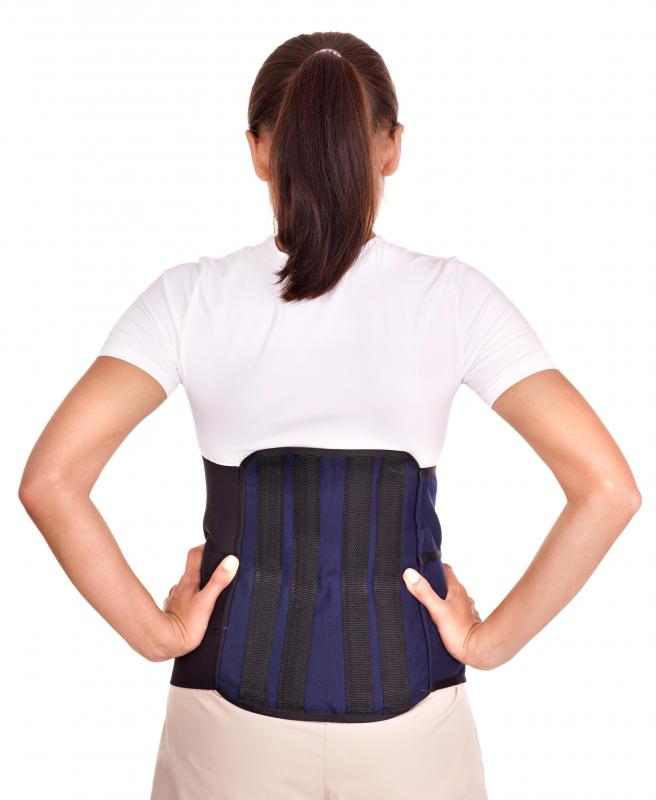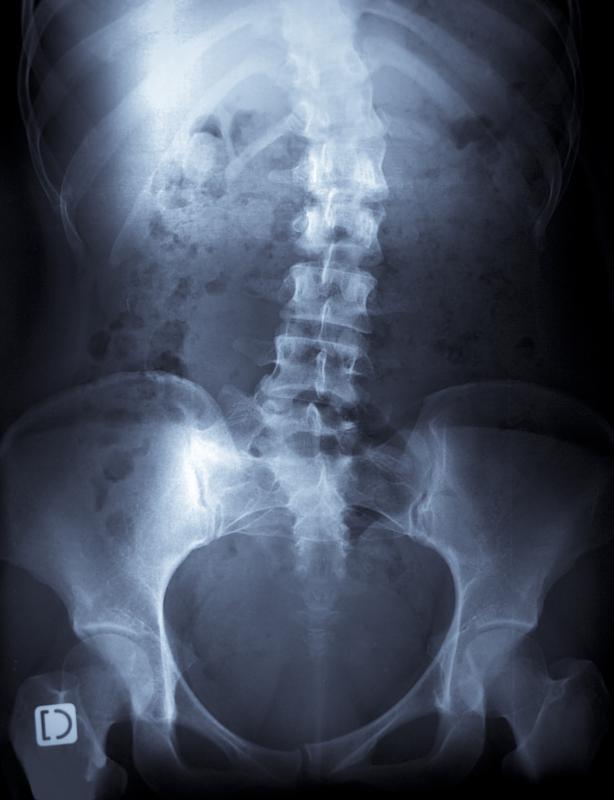At TheHealthBoard, we're committed to delivering accurate, trustworthy information. Our expert-authored content is rigorously fact-checked and sourced from credible authorities. Discover how we uphold the highest standards in providing you with reliable knowledge.
What is Lumbar Scoliosis?
Lumbar scoliosis refers to a condition in which the lower spine becomes curved. Spinal deformities can be caused by many different factors, including congenital disorders and arthritis, and usually result in lower back pain and chronic fatigue. Treatment for this type of scoliosis depends on the severity and the exact location of the curve. An orthopedic doctor can assess an individual's condition and determine the need for pain management medication, corrective braces, or surgery to relieve symptoms and promote recovery. With treatment, most people are able to overcome lumbar scoliosis and enjoy active lifestyles.
A person can experience lumbar scoliosis at any time in his or her life. Congenital disorders are usually noticeable right away in an infant, while adolescent scoliosis manifests as a young person's spine grows and develops awkwardly. In both children and adults, neuromuscular and skeletal disorders such as cerebral palsy, muscular dystrophy, and arthritis can contribute to the degeneration of tissue around the lumbar vertebrae, leading to scoliosis. Older people may also develop the condition due to general wear and tear on the lower back. Scoliosis is deemed idiopathic when doctors cannot determine a cause.

Lumbar scoliosis can result in several different signs and symptoms. Depending on the severity of curvature, an individual can experience frequent lower back pain and fatigue that worsen after long periods of sitting and standing. The hips can appear to be tilted due to the uneven spinal column, leading to an awkward gait and difficulties engaging in physical activity. Left untreated, the pain associated with scoliosis tends to get worse as soft tissue near the spine becomes constantly irritated. A serious curve can also cause numbness and problems controlling leg movement if it places pressure on nerves in the lower back.

A doctor can check for signs of scoliosis by conducting a thorough physical exam. The physician can also take x-rays and magnetic resonance imaging (MRI) scans of the lumbar region. X-ray and MRI results allow specialists to determine the degree of the curve and identify the precise location of the deformity. After making a diagnosis, the doctor can discuss different treatment options with the patient.

Most cases of mild scoliosis, especially those that are deemed idiopathic, are treated conservatively. A patient may be instructed to take over-the-counter or prescription medications to relieve chronic pain, and schedule regular checkups to ensure that lumbar scoliosis does not worsen. Children and adolescents who experience scoliosis are often fitted with custom back braces that must be worn for several hours a day in an effort to gradually reduce spinal curvatures.

Surgery is usually reserved for the most severe cases. A skilled surgeon can perform a spinal fusion, a procedure in which two or more vertebrae are permanently fused together to prevent scoliosis from getting worse. The patient may be required to wear a brace for several months following surgery to ensure a full recovery.
AS FEATURED ON:
AS FEATURED ON:
















Discussion Comments
All I know is if I sleep on the side of the curve, most of my symptoms show up drastically even during the sleep itself. Unusual nerve symptoms will show up.
I can wholeheartedly relate to the symptoms of lumbar scoliosis. I am aware that I have scoliosis, but I have never been properly diagnosed, because the doctor who performed the x-ray didn't know much about scoliosis. I was told to wear a pad in my shoe for comfort on the side of my curve (the left) and to even my hips out. I plan on scheduling an appointment with an orthopedic doctor soon, but I would gladly take some advice or information from anyone who has experiences or dealings with this condition.
@tlcJPC - I agree! While exercise is not necessarily an approved scoliosis treatment, it certainly can't hurt! Those who suffer this condition can absolutely benefit from being physically active, as can we all!
Did you know that there are actually scoliosis exercises? I know it sounds counterintuitive, but certain kinds scoliosis exercises can help with muscle strengthening and alleviating some of the physical restraints caused by the curve.
Of course, you should ask your doctor before doing any kinds of exercises with this condition, but when waiting for x-rays is a little too hard to handle, this is a positive outlet to turn to.
Post your comments